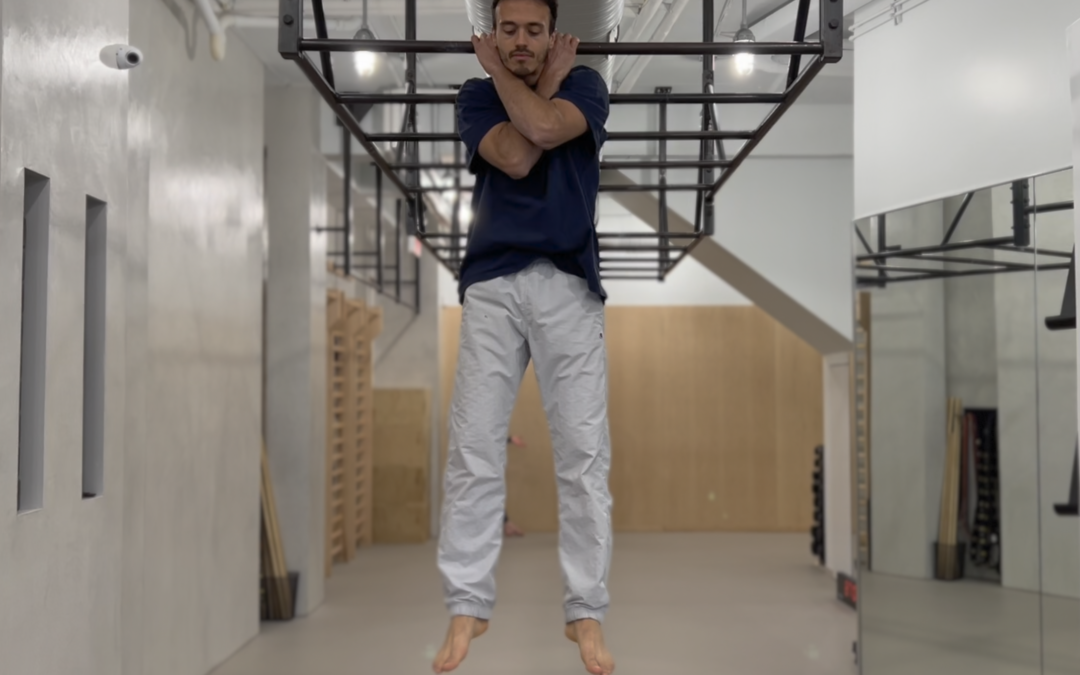
Bars – hanging & brachiation protocol
Today we will dive into a few ideas of more advanced hanging and brachiations.
Before we dive in, here’s a few clarifications:
1. These types of suspensions, where various parts of the body are used, are useful to design a wider base of work out of which one can then create riddles to availabilities in the body. On top of it, like the single pole and walls material, they increase grappling strength and facilitate the use of force not culminating nor originating from the very end of the extremities.
- The term ricochetal means to produce a subsequent series of hops and it is used to describe the first types of brachiation shown in the program. The second type, instead, are of the continuous contact family and do not include any airtime.
Now onwards with the protocol:
A1. Bilateral ricochetal wriggle
A2. Bilateral ricochetal reverse thrust
A1-A2 x 5-15 sec x 2 sets each side. Note. It can be done stationary if one has little space.
Goal. Working x 15 sec each set and with good coordination dynamics of the motions.
B. The guillotine pull up x 2-6 consecutive reps (alternating sides) x 3 sets.
Regression. it can be done with two arms together in a supinated grip, without ever releasing the bar.
Goal. Working with a 6×3 scheme
C. The Ateles routine
C1. One arm cubital hang
C2. One arm armpit hang
C3. One leg popliteus hang
C4. One arm yaniro hang
Perform C1-C4 in a sequence without ever coming down of the bar x 3-5 sets holding each position for 3-6 seconds. 3’ rest.
Goal. Working with 5 sets x 6 secs hold each position.
D1. Brachiation back cross
D2. Brachiation front cross
D1/D2 x 12 reps x 3 sets. Rest as needed.
Goal. Working with 12 reps with a correct coordination.
E. Lemniscate inside switch x 3-6 reps x 3 sets
Goal. Working with 6 reps and with a correct coordination.
Here’s the visual references to the exercises:
That’s it for today’s earth day! Enjoy its fruits and the vast interactions, take good care of you and of your surrounding environment – we are one, and wouldn’t be here without it.
Until next time,
Marcello.


Recent Comments